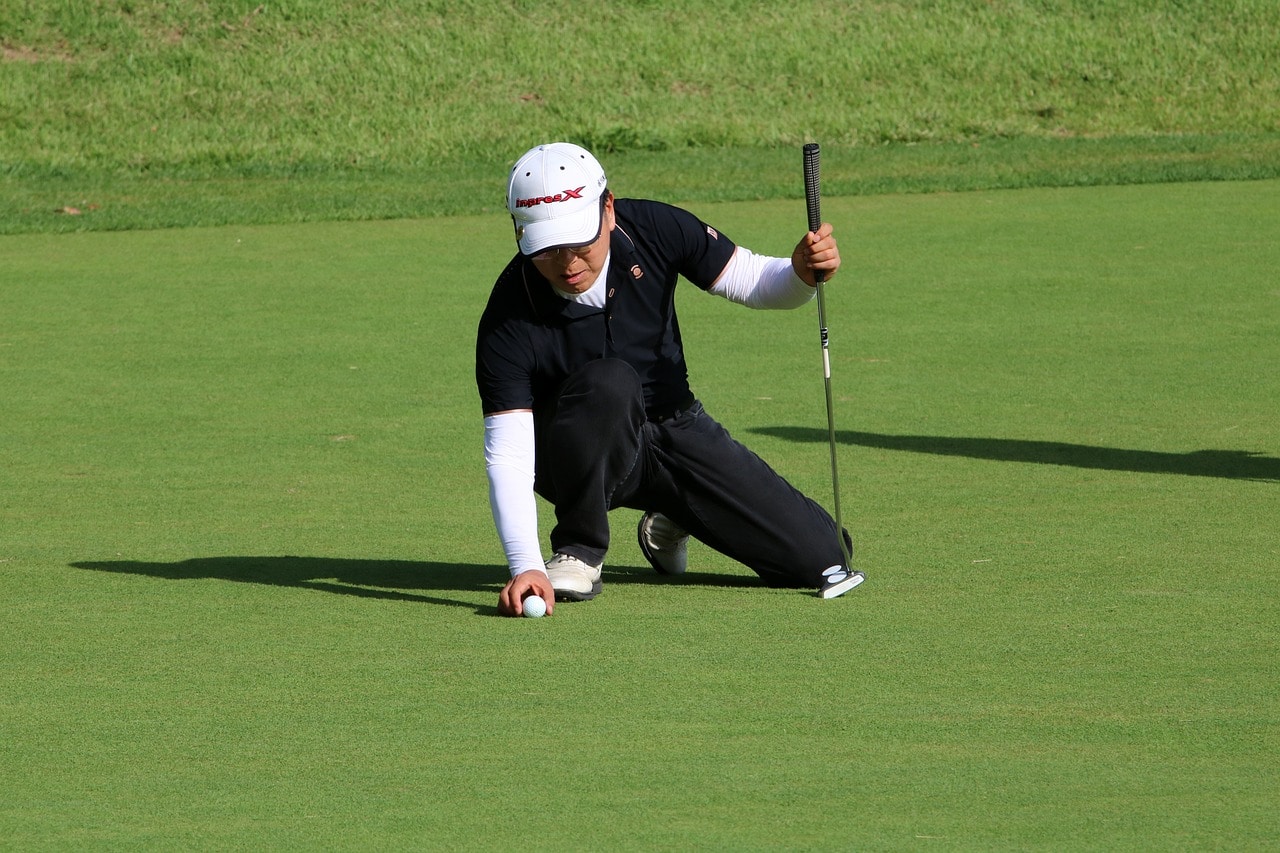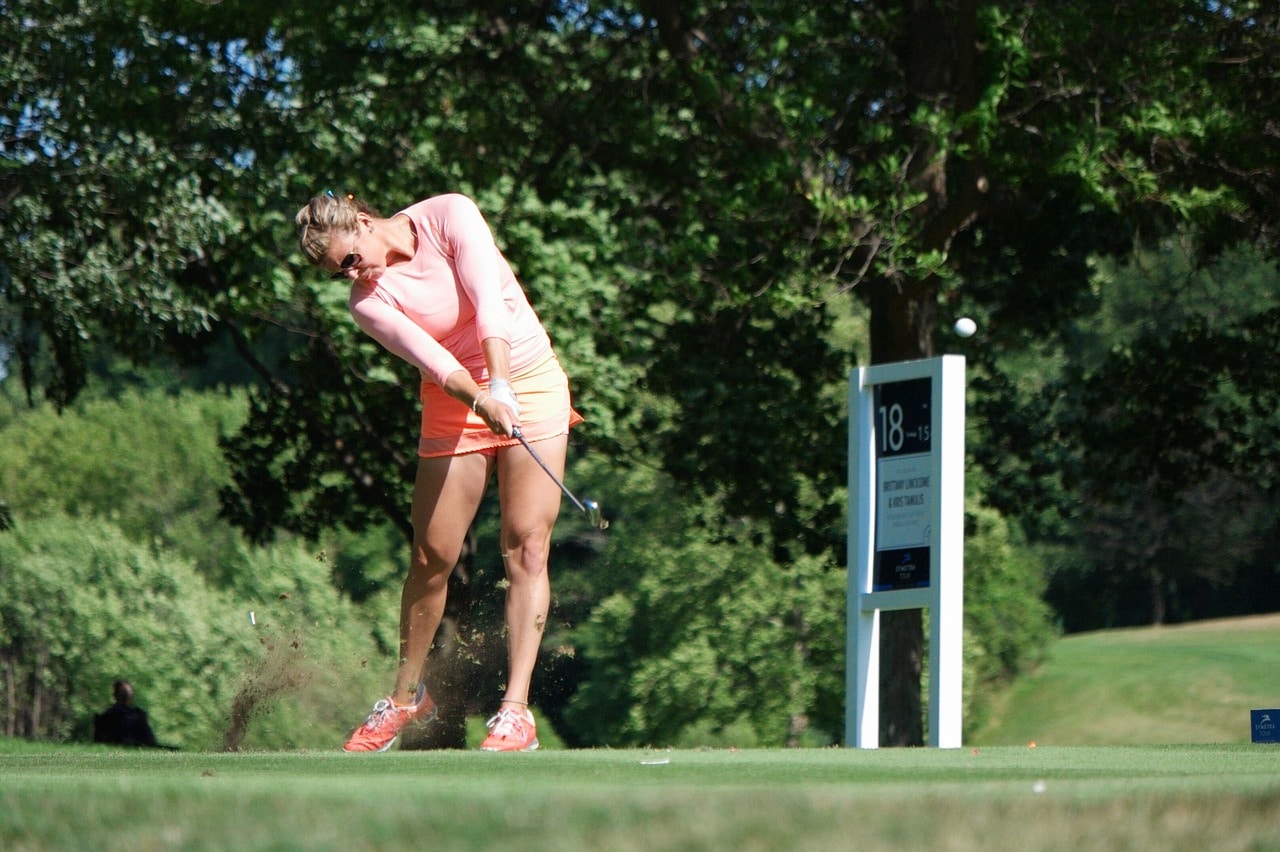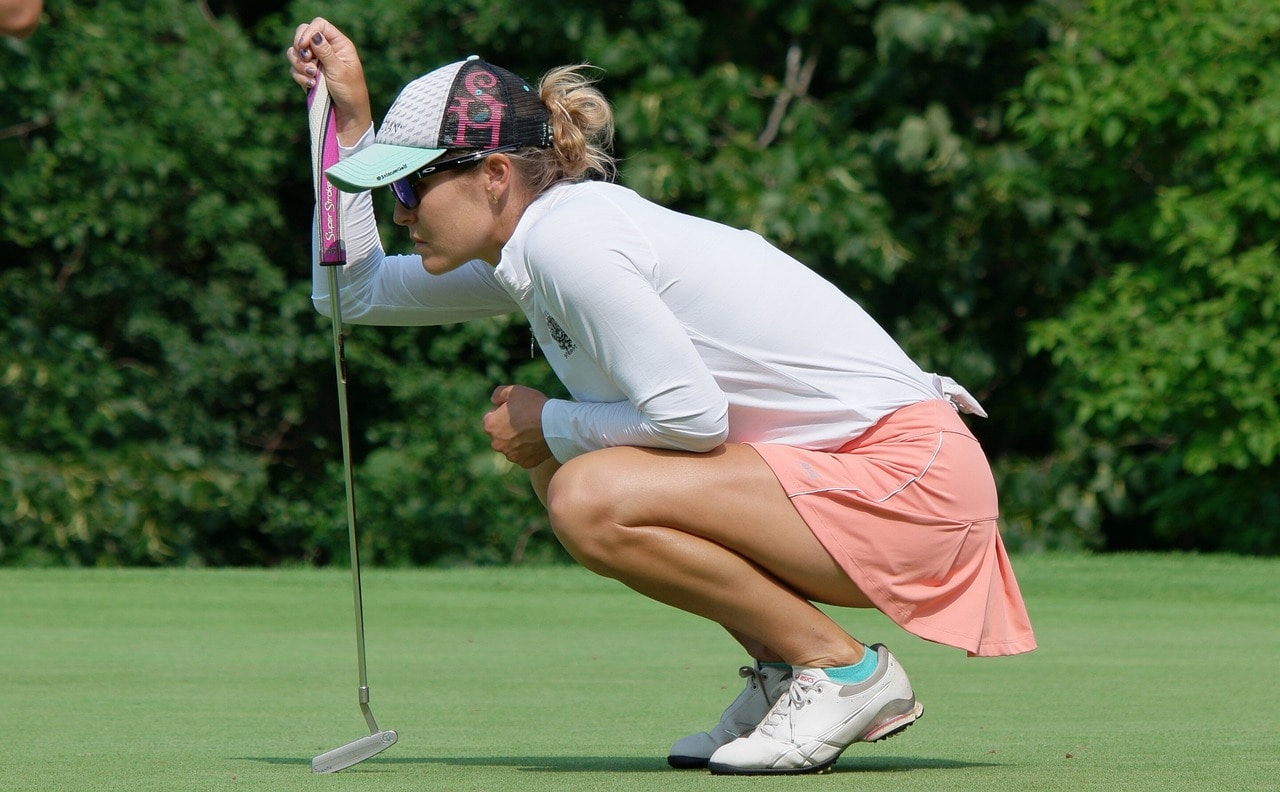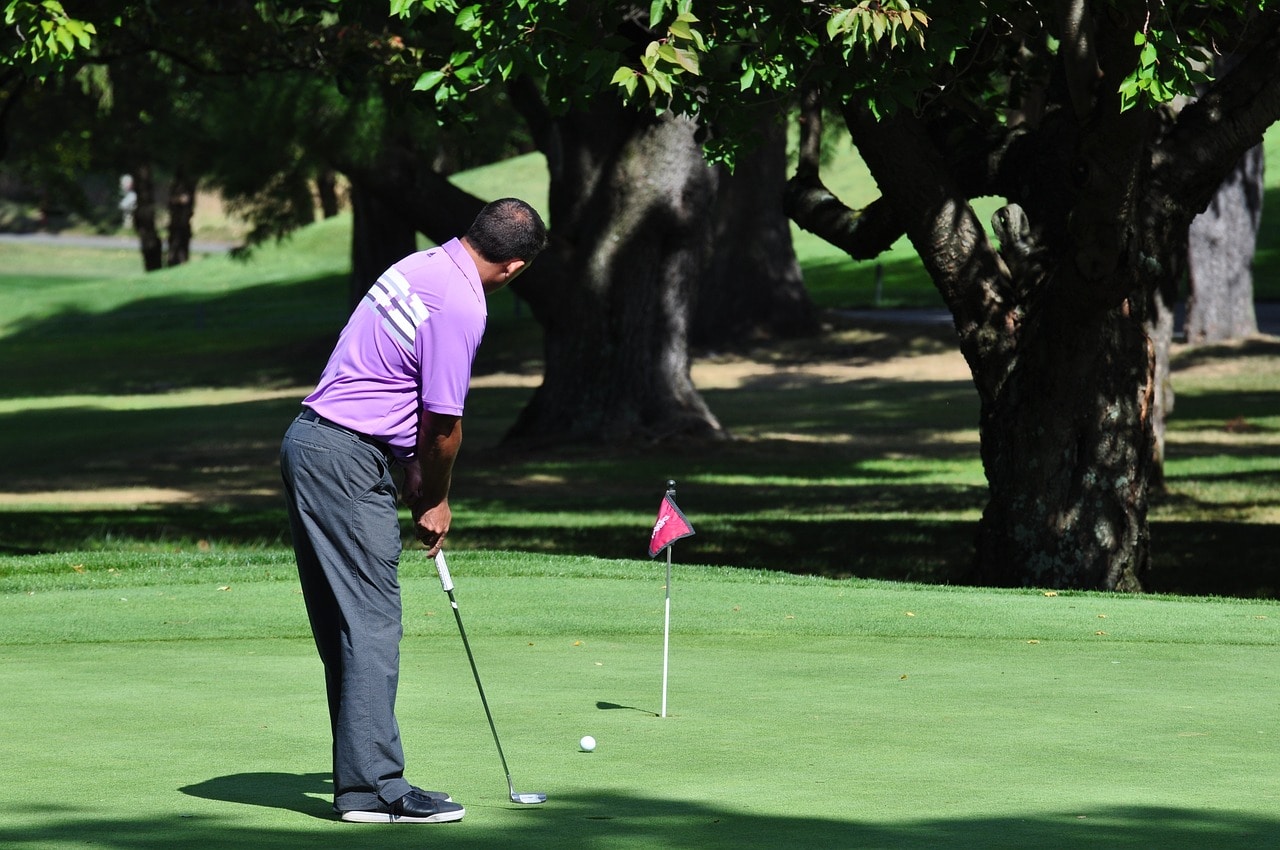How To Adjust The Loft On Your Golf Clubs
Table of Contents
Golf is often considered a game of precision and accuracy, where the tiniest adjustments can make all the difference. Adjusting the loft on your golf clubs is an integral part of this ever-evolving process as it allows you to control how far and high you hit each shot with every individual club in your bag. It’s no surprise then that making these changes has become an art form for many professionals and amateurs alike. In this article, we will look at how to adjust the loft on your golf clubs so that you too can gain mastery over such a nuanced technique.
At its core, adjusting the loft on your golf clubs requires attention to detail and patience. You must consider factors like swing speed, ball trajectory, spin rates, and other elements that affect performance when determining whether or not a change needs to be made. This delicate balance between understanding what works best for you while still experimenting can take time but ultimately makes becoming a better golfer possible.
Finally, after taking into account all relevant details and making any necessary adjustments, it’s important to ensure that each of your clubs performs optimally in order to maximize potential success out on the course. By following our guide below, you should be well prepared for fine tuning your golf skills through altering the lofts of your different clubs according to personal preference.
Understanding Loft Angles
Golfers have a common desire to improve their performance on the green. Adjusting the loft angle of golf clubs is an important step in maximizing their potential. It is essential, therefore, to understand how changing this angle can affect one’s game and what factors should be taken into consideration for selecting the appropriate level of loft for each individual swing.
The term ‘loft’ refers to the angle of elevation from which the clubface meets the ball at impact; it affects both control and distance. To simplify, it can be likened to launching a rocket: with too little lift-off (i.e., low loft), it will not travel far but if there is too much power (high loft) then accuracy may diminish. Therefore, achieving optimal performance requires striking a balance between these two extremes – like Goldilocks searching for her perfect porridge bowl!
In general terms, lower lofts are suited to straighter shots while higher lofts are more likely to produce more curvature or spin when required – although this depends partially on other variables such as shaft length and weight ratio. A good starting point would be 10-12 degrees for drivers, 14-16 degrees for fairway woods, 20-22 degrees for hybrids and 4-5 degree wedges ranging up to perhaps 60 degrees in extreme cases. That said however, players must ultimately choose based on personal preference and feel since everyone has different needs depending on their body size/type, playing ability etc..
To maximize success on the course then understanding your own set of conditions is key – experimentation with various angles can help you determine which works best for you as an individual player. With that knowledge acquired through practice and experience, you’ll soon find yourself confidently teeing off without fear of leaving yourself too short or ending up out of bounds!
Selecting The Right Loft For Your Swing
The sun shines down on the golf course, creating glistening diamonds of light that sparkle across the perfectly manicured greens. The bright emerald hue of the grass is complemented by a sea of white sand in each bunker and the crystal blue sky above. It’s an idyllic setting for any golfer to hone their craft and perfect their swing, particularly when it comes to selecting the right loft for your clubs.
Selecting the best loft for your clubs means understanding how different lofts affect distance, trajectory and spin rate. With this knowledge you can make adjustments or switch out certain clubs to suit your individual needs. Low lofts are better suited for slower swings with more power while higher lofts offer greater accuracy off the tee but less distance than lower lofts. If you’re struggling with consistency from one club to another, changing up your loft angles may be necessary.
Different players have very distinct swings; some faster-swinging players will benefit from increasing their angle of attack which helps launch shots off at a steeper angle resulting in increased carry distances. Slower swinging players should experiment with reducing their angle of attack as this shallower approach creates a flatter flight path allowing them to roll further once they land on the green. Additionally, adjusting your lie angle –the angle between ground and sole–can positively influence how well your ball reacts after impact with subtle changes having big impacts overall performance.
Now that we understand what role loft plays in our game, let’s turn our attention towards actually making these adjustments so you can get out there and experience improved results immediately!
Adjusting Loft Angles On Your Clubs
Golfers understand that the loft of their clubs can make all the difference when it comes to perfecting their swings and reaching peak performance. This essential element of playing golf provides an opportunity for players to fine-tune every aspect of their game, creating a sense of accomplishment as they hone in on achieving desired results. When it comes to adjusting the loft angle on your clubs, there is no room for error—it must be done with precision and care.
Adjusting the loft angles on your clubs requires careful consideration. To start, you will need to determine how much change needs to occur in order to achieve maximum benefits from the adjustment. The ideal choice depends largely on what type of club you are using, as well as the golfer’s individual swing speed and ball trajectory preferences. A professional fitting session or consultation may also be necessary if you have any doubts about which changes should be made.
Once you have established what adjustments need to take place, it is time to begin changing your club’s loft angles accordingly. By making small modifications at a time, you can gradually move closer towards finding the optimal setting with minimal effort while avoiding drastic alterations that could result in undesirable outcomes. Additionally, temporary markings such as tape can be used during this process so that any changes made can easily be undone if needed before moving onto further adjustments until satisfaction is achieved.
It is important to remember that even after successfully altering your club’s loft angle settings, there remains one more step: checking your clubface angle alignment. Ensuring that each face is set correctly helps ensure accuracy throughout each stroke, eliminating issues like twisting or turning caused by misalignment between various components of the golf club head assembly…
Checking Your Clubface Angle
Golf is a game that requires precision and accuracy. It can be difficult to understand all of the technical aspects of golf clubs, particularly when it comes to adjusting loft angles. To optimize your performance on the course, understanding how to check for clubface angle is important in order to make precise adjustments. As Confucius once said, ‘It does not matter how slowly you go as long as you do not stop.’ With this philosophy in mind, let us explore what steps are necessary for checking your clubface angle.
When checking the face angle of your clubhead, first take note of which direction you want the ball to travel after impact with the ground. This step is crucial because if the clubface is too open or closed then it will have an effect on where the ball lands and its trajectory; therefore, making sure to align correctly is essential. Next, identify which way the toe and heel should point relative to your target line. After positioning yourself accordingly, use a square ruler or protractor tool across both sides of the blade face while keeping them parallel with each other – by doing so you can measure whether they match up evenly or not.
Ensuring evenness among these two components will help determine if there needs to be any further adjustment needed based on their divergences from one another. Additionally, always double-check that everything lines up properly with respect to your original stance before beginning such adjustments as well as assessing why changes need to be made in order for corrections occur successfully without inducing further discrepancies elsewhere along the shaft’s structure.
By taking these measures into account during inspection processes we can guarantee efficient setup techniques that produce consistent results throughout our rounds of playing time – allowing us maximum enjoyment when hitting off tees and fairways alike! Moving forward though requires attention towards lie angle alterations next thus giving insight into how this affects energy transfers between player and equipment during shots taken out onto courses around world wide…
Adjusting Lie Angle
The fifth step in adjusting the loft on golf clubs is an adjustment of the lie angle. The lie angle refers to the angle between the sole of a club and its shaft when it makes contact with the ground. This requires technical knowledge and skill, so if you are uncertain about doing this yourself, seek professional help from your local pro shop or driving range.
Adjusting the lie angle can have a major impact on accuracy and distance for any given shot. A few key points should be kept in mind before making adjustments:
• Understand why you need to make changes – Is there something wrong with your current setup? Does it feel uncomfortable? Is it affecting performance negatively?
• Identify what needs changing – Are you trying to correct hooking or slicing? Do you want to hit higher shots or lower shots?
• Take measurements carefully – Use appropriate tools such as a lie board or protractor to measure accurately. Ensure that all other components of the club are set up correctly (e.g., grip size, weight, length).
To adjust the lie angle, use a wrench to loosen the head screws affixed at both ends of each club’s hosel and then rotate them accordingly until they reach their desired position on either side of vertical centerline. It is important not only to change one component but also balance all three elements (clubhead face direction, shaft lean position relative to that face direction, and toe-up/heel-down position) accordingly for optimal results. Once everything has been adjusted properly, remember to retighten all head screws firmly so that nothing moves during play!
By taking into account these factors when adjusting lie angles, players will be able to achieve maximum ball control while hitting better shots more consistently — without worrying about having too much spin or backspin off-center hits resulting in wayward shots due diligence must be taken throughout every stage of adjustment. Verifying loft and lie angles is just another part of ensuring proper golf equipment setup which ultimately leads towards improved playing performance out on course.
Verifying Loft And Lie Angles
It is widely accepted that the golf club’s lie and loft angles have a significant impact on ball flight. However, it has been theorized that verifying these settings after adjusting them can further improve results for players of all levels. To examine this theory, it is important to understand what exactly lies and lofts are, how they effect trajectory and accuracy, as well as methods for checking if adjustments have been made correctly.
At its most basic level, the term ‘lie angle’ refers to the angle between the sole of a golf club and an imaginary line drawn along the length of the shaft when at address position. This angle will differ depending on whether you are using a driver or an iron due to their different lengths. A higher lie angle helps promote better contact with the ground whereas lower angles allow for more consistent shot shape control. Loft determines where your ball will go in relation to its original starting point; the higher the loft, the greater chance of achieving distance from your shots. It also affects launch angles which in turn affect spin rates and carry distances so understanding your own preference here is key.
Verifying both lie and loft angles requires careful observation during setup prior to hitting any shots. The first step should be visually inspecting each individual club head by laying them out side-by-side against a flat surface such as a table top or countertop. The second task involves using specialized tools like digital protractors or laser technology devices to accurately measure readings taken at address position while looking down through alignment sticks or rods placed parallel with one another perpendicular to target direction (or square). Checking numbers against manufacturer specifications allows us to ensure our clubs match desired specifications before heading out onto course play – giving ourselves every opportunity possible for success!
Adjusting both lie and loft angles can help golfers find optimal performance but only if done properly from beginning till end including verification steps afterwards. With this knowledge under our belts we now have enough information to confidently proceed into maintenance steps required for keeping adjusted clubs in tip-top shape over time…
Maintaining Your Adjusted Clubs
Maintaining your adjusted golf clubs is an important part of their longevity and performance. It requires regular monitoring and periodic maintenance to ensure they remain in the desired condition when you play. Properly adjusting loft, lie angle, and other club specifications can improve accuracy and distance. This article will discuss how to maintain these adjustments.
First, it is important to understand that as a golfer plays with their clubs over time, they may need readjustment due to factors such as wear and tear or environmental conditions. Frequent inspection of each club should be done on a monthly basis so any changes in specifications can be identified early on and addressed. Additionally, inspecting for damage from impacts or other sources should also occur often, as this could lead to inaccurate shots if not fixed quickly.
Next, proper storage of the clubs must be taken into consideration for successful maintenance of the adjustments made during setup. Clubs should always be stored indoors away from extreme temperatures or moisture levels which could affect the material used for construction; this includes avoiding environments near saltwater or high humidity areas like saunas or steam rooms. After use outdoors, all dirt and debris should be wiped off using a clean dry cloth before storing them back inside where they are kept out of direct sunlight exposure while still allowing air circulation around them.
Finally, keeping track of specific adjustment notes can help minimize unnecessary guesswork if future tweaking needs to take place down the line. An easy way to do this would be by writing down pertinent information on a small piece of paper within each club’s individual bag – noting details such as what type of shaft was installed or what lie angle adjustment was needed for optimal results – ultimately helping ensure consistent success every round played thereafter!
Conclusion
Adjusting the loft on golf clubs can be a great way to enhance one’s performance on the course. It is important to understand how different loft angles impact ball flight, and choose an angle that works best for individual swings. The process of adjusting the loft requires attention to detail, beginning with selecting the right angle, then properly adjusting it using tools designed specifically for this purpose. Clubs must also have their lie angle checked; if incorrect they should be adjusted as well. To verify correct adjustment, use a launch monitor or other device that records data about ball flights and clubhead speeds.
One example of successful loft adjustments comes from professional golfer Robynn Ree who used her driver’s adjustability to gain more control over her tee shots. She increased her club’s loft by 1 degree and saw an immediate increase in her drive distance due to improved launch conditions and better spin rate. This change enabled Ree to hit longer drives down the fairway and maintain accuracy throughout her rounds.
Loft adjustments can benefit any player looking for improvement in their game, provided they are done correctly and regularly maintained thereafter. With proper technique and understanding of what lofts work best for certain types of swings, players can make significant improvements in their overall performance on the golf course.




